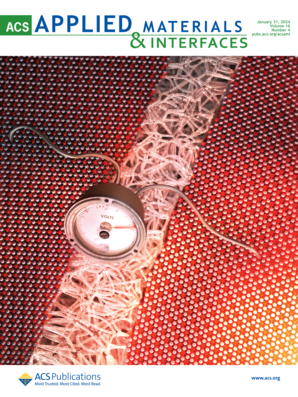NIR-II Luminescent Nanothermometer for Precise Assessment of Ischemic Stroke.
IF 8.2
2区 材料科学
Q1 MATERIALS SCIENCE, MULTIDISCIPLINARY
引用次数: 0
Abstract
Ischemic stroke, an acute cerebral local blood circulation disorder caused by neurological deficit syndrome, has emerged as a prominent ailment that can affect the well-being and quality of life of the elderly. The difficulty in early assessment and narrow therapeutic time window can increase the risks of mortality and disability. Monitoring the temperature of brain microregions is a promising strategy for assessing the onset of an early stroke, which is positively correlated with the intricate immune response. In this study, an innovative hybrid nanothermometer combining lanthanides and quantum dots was established for contactless monitoring of cerebral lesion temperatures in mice with ischemic stroke. The output of ratio optical signals in the near-infrared-II window (1000-1700 nm) guaranteed deep penetration, high accuracy, and reduced tissue damage. An obvious temperature increase was detected in the minor middle cerebral artery occlusion model mice (4 h after reperfusion), indicating the occurrence of a minor stroke even in the absence of abnormal behaviors. Moreover, a further increase in the brain temperature of the ischemic region resulted in a more severe cerebral lesion, suggesting the potential advancement of the treatment window for early ischemic stroke. The proposed approach can enable precise assessment of ischemic stroke, with significant implications for the incidence and progression of the illness, ultimately enhancing the quality of life of affected patients.NIR-II型荧光纳米体温计用于缺血性脑卒中的精确评估。
缺血性中风是一种由神经功能缺损综合征引起的急性脑局部血液循环障碍,已成为影响老年人健康和生活质量的突出疾病。早期评估困难和治疗时间窗狭窄会增加死亡和残疾的风险。监测脑微区温度是评估早期中风发病的一种很有前途的策略,它与复杂的免疫反应正相关。本研究建立了一种结合镧系元素和量子点的新型混合纳米体温计,用于非接触式监测缺血性脑卒中小鼠的脑损伤温度。在近红外- ii窗口(1000-1700 nm)输出比例光信号,保证了深穿透、高精度和减少组织损伤。大脑小中动脉闭塞模型小鼠(再灌注后4 h)体温明显升高,提示在行为无异常的情况下也会发生小卒中。此外,缺血区脑温度的进一步升高会导致更严重的脑损伤,提示早期缺血性脑卒中的治疗窗口期可能提前。提出的方法可以精确评估缺血性卒中,对疾病的发病率和进展具有重要意义,最终提高受影响患者的生活质量。
本文章由计算机程序翻译,如有差异,请以英文原文为准。
求助全文
约1分钟内获得全文
求助全文
来源期刊

ACS Applied Materials & Interfaces
工程技术-材料科学:综合
CiteScore
16.00
自引率
6.30%
发文量
4978
审稿时长
1.8 months
期刊介绍:
ACS Applied Materials & Interfaces is a leading interdisciplinary journal that brings together chemists, engineers, physicists, and biologists to explore the development and utilization of newly-discovered materials and interfacial processes for specific applications. Our journal has experienced remarkable growth since its establishment in 2009, both in terms of the number of articles published and the impact of the research showcased. We are proud to foster a truly global community, with the majority of published articles originating from outside the United States, reflecting the rapid growth of applied research worldwide.
 求助内容:
求助内容: 应助结果提醒方式:
应助结果提醒方式:


